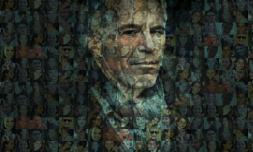For various reasons, getting inked increasingly involves breaking the bank. What does this mean for the industry and for the future of an art form that’s been around for generations?
If you cast your mind back to the days of T-shirts and shorts earlier this year – now replaced by jumpers and thermals as British winter rolls in – an afternoon of people watching may have had you believing that everyone has a tattoo.
More so if you compare TV shows from the early 2000s with the likes of Love Island and even Bakeoff, on which they’ve become increasingly visible.
As my tattooed mum likes to tell me: you’re different these days if you don’t have one.
Although statistically speaking her calculations are probably a tad off (part of her attempts to stop me from painting more bright, permanent colours onto my skin), it’s not unusual to see an inked-up Brit when you consider that 26% of the population has at least one tattoo.
Not only this, but of the 130 people who answered my Instagram poll, 72% said they have one, 50% said they have more than five, and 13% said they have more than 20.
With artists and studios displaying their work on social media, it’s never been easier to get in touch and book an appointment.
While the well-known flash sheet – a page of pre-drawn designs budding tattoo-ees can choose from – has been around since the 19th century, digital marketing has inarguably contributed to the tattoo boom among young people.
The craze does seem to have notably died down among Gen Zers, though, with millennials still the most tattooed generation.
This is because despite research suggesting that society is becoming increasingly more accepting of people with tattoos, there are still floating concerns around professionalism and the potential for tattoo regret.
Several respondents to the aforementioned poll cited ‘the unavailability of safe and reliable artists’ as something that might prevent them from getting more tattoos.
Similarly, one expressed concern towards ‘gatekeeping and fake reviews,’ while another commented that a lot of artists ‘seem like they hate their job and their customers.’
Factors like the rising cost of tattoos and rapidly changing trends also mean that young people might be less willing, or less able, to get inked.
@nothingsrs Wondered why are tattoos so expensive? Great points at the end by @_fatmum_ ! #expensivetattoo #tattooprice #tattooprices #tattooartist #transparency ♬ I’m Good (Blue) [Sped Up Version] – David Guetta & Bebe Rexha
Undeniably, how much it’ll set you back to decorate your skin has increased dramatically in recent years.
Due to the cost-of-living crisis, the overhead costs of studio spaces, spiking equipment prices, as well as taxes and insurance, if you want a safe tattoo experience with a skilled professional, you have to be prepared to pay a little more.
The results of the poll indicate that most young people are aware of this and understand why, with over 60% saying ‘yes, but reasonable’ in response to ‘do you think tattoos are too expensive?’



















